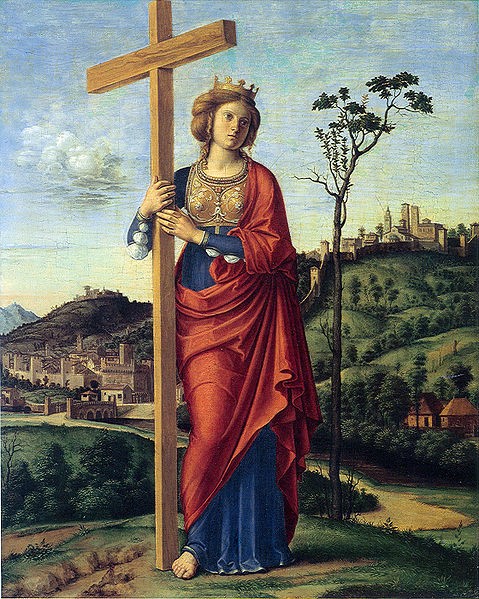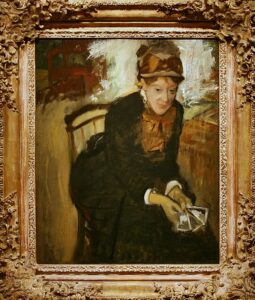This is a legend unlike any other. It all started with a young servant girl named Flavia Julia Helena.1 Born in 248 C.E. in Bithynia, a province of the Roman Empire, Helena was no different from anyone else, until the day that she caught the eye of the Roman emperor Constantius I Chlorus with her beauty.2
They married, had a son in the year 272 who, if you have ever learned anything about Roman history, you will probably know. Their son was the one and only Constantine. Constantine became one of the greatest Roman emperors. One of the things he is known for is the Edict of Milan, issued in the year 313.3 The Edict of Milan allowed for Christianity to be a freely practiced religion. It was at this time that Helena most likely converted to Christianity.4

In the year 324, Constantine sent Helena on a pilgrimage to the Holy Lands in search of the “Holy Sepulcher” and “The True Cross.” The “Holy Sepulcher” is the location of the crucifixion of Jesus Christ, while “The True Cross” is the cross on which Jesus Christ was crucified.5 On this pilgrimage, it was said that Helena “followed in the footsteps of Jesus,” by performing many acts of kindness and good works, such as giving money, food, and clothing to the poor, and also helping churches with funds as well as their other needs.6 After weeks of traveling, they finally made it to Jerusalem. With the help Judas Cyriancus, a man selected at random and forced against his will to help, Helena was able to get closer than she ever had to finding “The True Cross.”7 This is where the story diverges. Although some believe a commoner from a nearby town led Helena to “The True Cross,”others believe that it was Judas Cyriancus.
They continued their search for days, when their prayers were finally answered. Helena said it was then, “With sweet smelling dust and a flash of lighting pointed to the place where,” she instructed Judas to started digging.8 Finally, they uncovered three crosses, one thought to belong to Jesus Christ, and the others belonging to the two thieves that died alongside Him. To test and see which one of these crosses truly belonged to Jesus Christ, they searched for a leper at the outskirts of Jerusalem. Once one was found, they returned back to the site of Golgotha, the place of Jesus’ crucifixion. The leper was instructed to touch each of the crosses one by one. He touched the first one and nothing happened. He touched the second one and still nothing happened. Finally, when he touched the third and final cross, the leper was instantly healed.9 It was this cross that healed the leper, and for that reason it is known as the “The True Cross.”

The cross was then carried back to Constantinople, while part of the cross was placed in the hands of the bishop of Jerusalem.10 As the years passed, fragments of “The True Cross” were placed in the care of many Catholic churches around the world for all to admire. Although we may never know whether the cross they found and distributed was “The True Cross,” like all legends, in the end it is up to us whether to believe the account or not.
- Dictionary of World Biography, 2016 s.v. “Helena, St.” ↵
- Global Events: Milestone Events Throughout History, 2014, s.v. “Saint Helena Makes a Pilgrimage to the Holy Land,” by Jennifer Stock. ↵
- Global Events: Milestone Events Throughout History, 2014, s.v. “Saint Helena Makes a Pilgrimage to the Holy Land,” by Jennifer Stock. ↵
- Dictionary of World Biography, 2016 s.v. “Helena, St.” ↵
- New Catholic Encyclopedia, 2003 s.v. “Helena, St,” by J. H. Geiger. ↵
- Global Events: Milestone Events Throughout History, 2014, s.v. “Saint Helena Makes a Pilgrimage to the Holy Land,” by Jennifer Stock. ↵
- Barbara Baert, “New Observations on the Genesis of Girona (1050-1100). The Iconography of the Legend of the True Cross,” Gesta 38, no. 2 (1999): 117-121. ↵
- Barbara Baert, “New Observations on the Genesis of Girona (1050-1100). The Iconography of the Legend of the True Cross,” Gesta 38, no. 2 (1999): 117-121. ↵
- Barbara Baert, “New Observations on the Genesis of Girona (1050-1100). The Iconography of the Legend of the True Cross,” Gesta 38, no. 2 (1999): 117-121. ↵
- Religious Celebrations: An Encyclopedia of Holidays, Festivals, Solemn Observances, and Spiritual Commemorations, 2011, s.v. “Elevation of the True Cross (September 14),” by J. Gordon Melton. ↵



56 comments
Belia Camarena
This article has a great story like quality, and this made it very enjoyable to read. I was surprised to read that St. Helena started off as a servant girl before she married the Roman emperor, and I had completely forgotten that her son was Constantine, one of the most famous Roman emperors. I found it very interesting that St Helena was able to determine which cross was the true cross by having a leper touch it.
Austin Pena
While it is true that we may not ever know if the cross distributed was the True Cross, nonetheless this article was a very interesting read. I personally find religion interesting and enjoy reading articles like this that show just how far some people go to show there faith. And the lengths she went to was incredible, and just knowing that how powerful a man could be even after his death is amazing. Christ had been dead for almost 300 years but yet his story stayed alive and even caused for a Roman Empress to go out and search for his Cross. If someone living in Jesus’ time was to be told that a Great Roman empress would one day help spread his message no one would have believed them, but here we are 2000 years later and Christianity is still one of the most influential religions around.
Natalia Flores
This article was very insightful to the True Cross story. I did not know who or how they found the True Cross so this was a very interesting read. This story was filled with things that surprised me, especially the part where they brought a Leper to touch the crosses to see which one was the True Cross. It also astonishes me as to how they found those three crosses since it seems like locals knew where they were, but never touched them.
Cristina Cabello
I find our Catholic religion so interesting. There is so much to learn and so many teachings. Then also numerous saints to look up to. I like how unique this faith is with our traditions. By reading Michelle’s article about the true cross is so beautiful. It is short and simple but displays how mighty our God truly is. The cross in this article is similar to the parable when Jesus was walking through town and someone simply touches his clothes to be healed.
Samuel Ruiz
The narration in this article is very easy to understand and process. I had heard of this legend before, but I had never bothered to research it. It amazes me that the faith of early Christians was so strong. For a woman like St. Helena to take the time to find the original cross of Jesus, it must take incredible faith. Furthermore, I cannot imagine the excitement that both Helena and Judas experiences when the leper was healed upon contact with the third cross.
Christopher Sanchez
An interesting article I’ve read by far. I’ve always wondered what happened to The True Cross but when Julia Helen found it I was shocked. Julia Helen was like everyone else but when she got married and gave birth to Constantine her life changed forever. First, she converted to Christianity then went on a pilgrimage to find The True Cross and when she found it, it healed a leper which is mind blowing. I’m curious as to who was Constantine and what he has done throughout his lifetime.